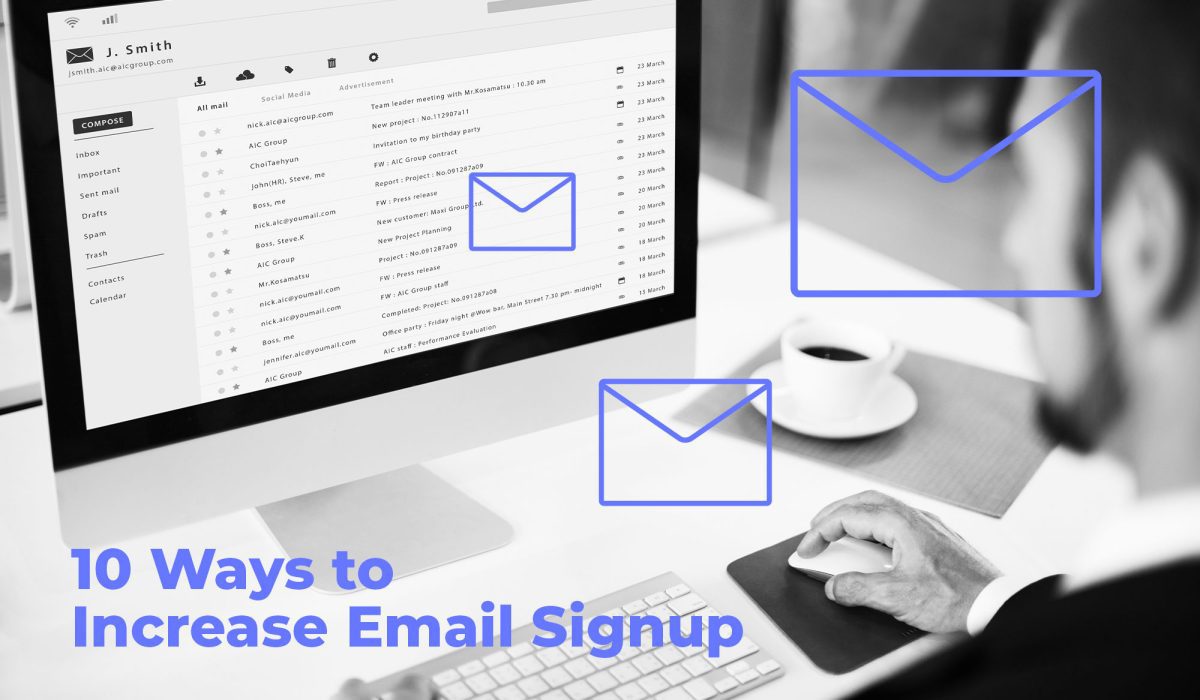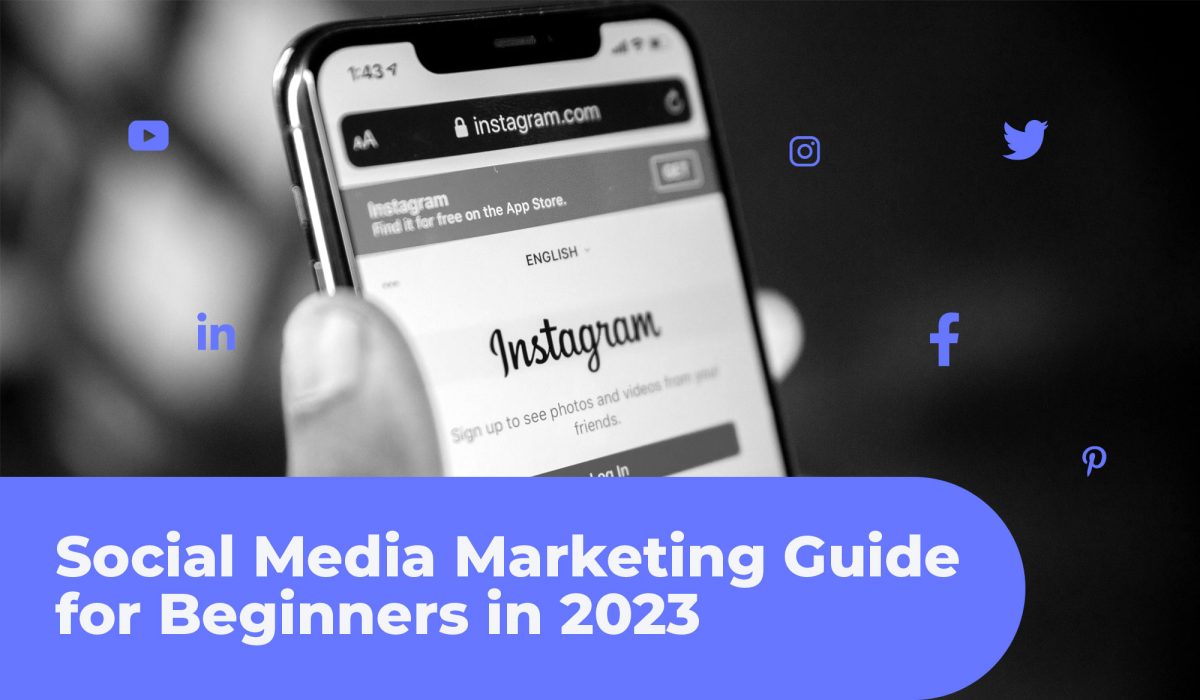If your sign-up form has seen better days, you’re in the right place. We have a great guide that will show you the 10 steps you need to take in order to increase your email sign-ups.
We’re focusing on:
- Offering an incentive
- Making your email sign-ups prominent
- Providing social proof
- Using pop-ups
- Making it simple for email subscribers to engage
- Personalizing the experience
- Using a double opt-in form
- Segmenting your audience
- Testing and optimizing
- Social media promotion
Offer an incentive
Provide a discount, free trial, or another reward to encourage signups.
The best incentive to offer depends on your target audience and the nature of your business. Here are some popular incentives:
Free trial
Offer a free trial of a product or service to entice signups. It’s an extremely popular incentive that lets your email subscribers fall in love with your service so that they keep using it.
Discounts
Provide a discount code or coupon to incentivize signups. That way, new subscribers will be more likely to become new clients.
Exclusive content
Offer exclusive content, such as eBooks, webinars, or early access to new products.
Entry into a contest
Run a contest and require email signup to enter.
Personalized recommendations
Offer personalized recommendations based on the subscriber’s interests or preferences. Make sure you’re listening to your audience base and keeping them in mind when making these decisions.
Remember, the key is to choose an incentive that is relevant and valuable to your target audience.
Make it prominent
Place the signup form in a visible location on your website or blog.
The sign-up page should have only one CTA. Don’t overcrowd it with too much content. It should be clear for your website visitors how they can sign up for your newsletter and what they can expect from it.
Provide social proof
Show social proof such as testimonials or the number of subscribers you have.
Social proof is a psychological phenomenon where people tend to conform to the actions of others in an attempt to reflect correct behaviour. Here are some ways to utilize social proof to increase email signups:
- Display subscriber count. Show the number of subscribers you have to demonstrate the popularity of your email list.
- Use testimonials. Display testimonials from satisfied customers to build trust and credibility.
- Show social media followers. Display the number of followers you have on social media platforms to demonstrate your popularity.
- Display trust badges. Trust badges, such as SSL certificates or trusted payment gateways, help you build trust and credibility.
- Show media mentions. Display logos of media outlets that have featured you to demonstrate authority and credibility.
- Highlight influencer endorsements. Highlight endorsements from influencers or thought leaders in your industry to demonstrate the quality of your brand.
Remember, the goal is to use social proof to build trust and credibility with potential subscribers and encourage them to sign up for your email list.
Use pop-ups
Use timed pop-ups or exit-intent pop-ups to prompt visitors to sign up.
Pop-ups are a type of website overlay that can be used to capture email addresses or promote a specific action. Here are some best practices for using pop-ups to increase email signups:
- Timing
Use timed pop-ups to display after a certain amount of time on the page, or exit-intent pop-ups to display when a visitor is about to leave the page. - Content
Keep the content of the pop-up simple and to the point. Focus on a clear value proposition and a strong call to action. - Design
Use a clean and professional design that matches the overall look and feel of your website. - Frequency
Limit the frequency of pop-ups to prevent annoying visitors and negatively affecting the user experience. - A/B testing
Regularly test different variations of your pop-up to determine which performs best in terms of conversion rate. - Mobile optimization
Make sure your pop-ups are optimized for mobile devices to provide a consistent experience across all devices. - Exit pop-ups
Use exit pop-ups to capture email addresses when a visitor is about to leave your site, offering a last chance to sign up.
Remember, the goal is to use pop-ups as a tool to encourage email signups while also providing a positive user experience.
Make it simple
Keep the form short and to the point, asking only for essential information. Don’t overcrowd your sign-up form with questions about the company the people work in.
The more information you ask for, the less likely will people be to sign-up for your newsletter. if you want more subscribers, simplify your sign-up form.
Personalize the experience
Use the visitor’s name and other personal information to create a more personalized experience.
Personalizing the experience can help build a strong connection with your audience and increase email signups. Here are some ways to personalize the experience.
Address the visitor by name in the signup form, email content, and follow-up communications.
Offer different signup forms or incentives based on visitor characteristics, such as location or interests.
Use the subscriber’s name in the subject line of emails to increase open rates.
Use subscriber data to personalize the content of your emails, such as offering recommendations based on previous purchases.
Use dynamic content to display different content based on the subscriber’s interests or behaviour.
Offer customized incentives: Offer customized incentives based on subscriber data, such as a discount code for their favourite product.
Remember, the goal is to provide a personalized experience that makes the subscriber feel valued and appreciated, increasing the likelihood of them staying subscribed to your email list.
Use a double opt-in
A double opt-in is a process in email marketing where a subscriber must confirm their subscription by responding to a confirmation email. Here’s how to use a double opt-in process:
- Offer signup
Provide a signup form on your website or through a landing page where visitors can enter their email addresses to subscribe. - Send confirmation email
After a visitor submits their email, send a confirmation email that includes a unique link for the subscriber to confirm their subscription. - Confirm subscription
Once the subscriber clicks the unique link, their subscription is confirmed and they are added to your email list. - Send a welcome email
After a subscriber confirms their subscription, send a welcome email to thank them for joining your email list. - Start emailing
Begin sending targeted and personalized emails to the subscriber based on their interests and behaviour.
Double opt-in helps ensure that subscribers have voluntarily subscribed to your email list, reducing the likelihood of spam complaints and improving the quality of your email list.
Additionally, a double opt-in process can also increase the engagement and relevance of your emails, as it helps establish a more engaged and interested subscriber base.
Segment your audience
Segmenting your audience is the process of dividing your email list into smaller groups based on specific characteristics or behaviours. Here’s why it’s important to segment your audience.
Increases relevance
By segmenting your audience, you can send targeted and relevant content to each group, improving engagement and reducing the likelihood of unsubscribes.
Improves deliverability
By sending targeted emails, you increase the chances of your emails landing in the inbox and avoiding spam filters.
Increases ROI
By sending targeted emails, you can increase conversion rates and the overall return on investment from your email marketing efforts.
Helps with personalization
Segmenting your audience can help you personalize the experience for each subscriber, which can increase loyalty and engagement.
Improves testing and optimization
By dividing your audience into smaller groups, you can easily test and optimize different aspects of your email campaigns, such as subject lines and content.
In summary, segmenting your audience is important because it allows you to send more relevant and targeted emails, which leads to improved engagement, deliverability, and ROI from your email marketing efforts.
Test and optimize
Regularly test and optimize different elements of the signup process to improve conversion rates.
Optimizing your email marketing efforts involves making changes to improve the effectiveness and results of your campaigns. Here are some ways to optimize your email marketing:
- A/B testing
Test different variations of your email campaigns, such as subject lines, content, and design, to determine which elements drive the best results. - Segmentation
Segment your audience based on specific characteristics or behaviours, such as location or purchase history, to send targeted and relevant content. - Personalization
Use subscriber data to personalize the content and subject line of your emails, improving relevance and engagement. - Mobile optimization
Optimize your emails for mobile devices to ensure they look great and are easy to interact with on smaller screens. - Engagement metrics
Track engagement metrics, such as open rates and click-through rates, to measure the success of your campaigns and identify areas for improvement. - Deliverability
Monitor your email deliverability and take steps to improve it, such as maintaining a clean email list and avoiding spam triggers. - Timing
Test the optimal send time for your audience to determine the best time to send your emails for maximum engagement and results.
By regularly testing and optimizing your email campaigns, you can continually improve the effectiveness and results of your email marketing efforts.
Promote through social media
Social media promotion is a powerful tool to increase email signups and build your email list. Here are some ways to use social media promotion to drive email signups:
- Include email signup forms on your social media profiles and link to them in your posts and bio.
- Offer incentives, such as exclusive content or discounts, for subscribing to your email list through social media.
- Share a preview of your email content on social media to drive interest and encourage signups.
- Run contests and giveaways exclusive to your email subscribers to increase signups.
- Share social proof, such as testimonials or case studies, to show the value of subscribing to your email list.
- Collaborate with influencers in your industry to reach a wider audience and drive signups.
- Use social media ads to reach a targeted audience and drive signups to your email list.
By incorporating social media promotion into your email marketing strategy, you can reach a wider audience and drive more signups to your email list.
Conclusion
Increasing email sign-up can easily be done with our simple guide. Make sure that you’re offering great value in your newsletters and engaging your subscribers with high-quality content.




